Looking back at the 'life' full of ups and downs of Internet Explorer
Internet Explorer will always be remembered for being a good tool for downloading other browsers.
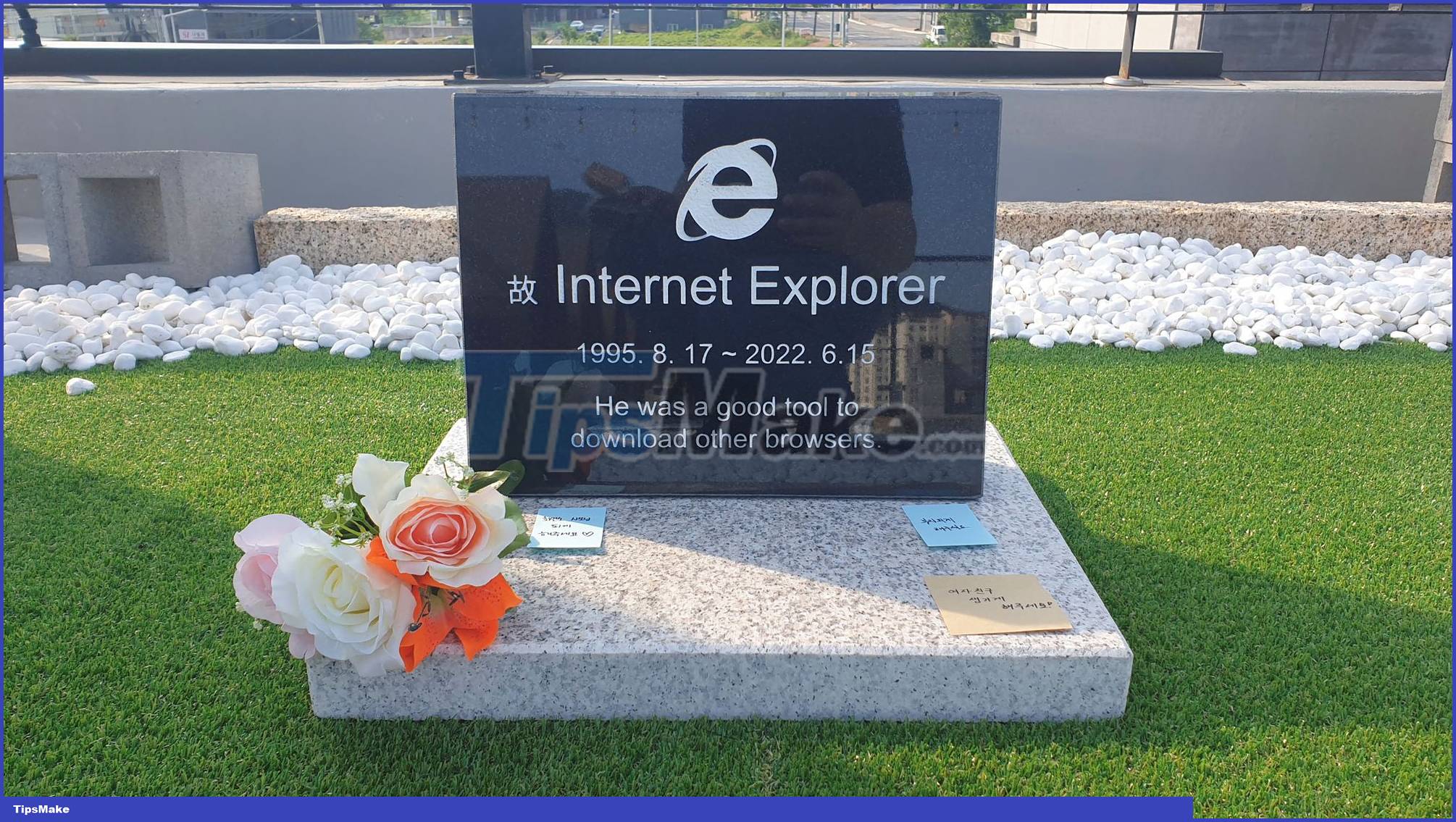
Instead of focusing on web standards, Microsoft built proprietary technology like VBScript and JScript, an alternative to JavaScript. Microsoft's aim is not to create a better web environment for everyone, but to dominate the web the way the company has dominated computer operating systems.
Microsoft was sued for anti-competitive behavior when combining Internet Explorer with Windows. In 2003, Internet Explorer had a usage rate of 95%, but the launch of Mozilla Firefox in 2004 and the launch of Google Chrome in 2008 changed these numbers.
Combining software with an operating system is a great way to get people to use it. Once the software is available, many people will not want to look to other software. However, sometimes there are exceptions, and once users have found something better free than available, they change their preferences very quickly.
That is exactly what happened. Internet Explorer has finally been seen as the 'Google Chrome installer', as when setting up a new PC the first thing many people will do is open IE, install Chrome, and never touch the blue E icon that too.
Internet Explorer 1
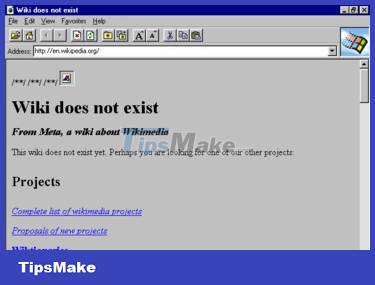
Internet Explorer is the creation of Thomas Reardon and it has been released as part of Microsoft Plus! For Windows 95, the $49.99 software package includes the 'Internet Jumpstart Kit', a Space Cadet Pinball game, and some utilities such as DriveSpace 3 and Compression Agent. Microsoft Internet Explorer was launched on August 17, 1995, by a team of only 6 members.
Soon after, Internet Explorer 1.5 was released, which added support for displaying tables. This is also when Microsoft started to bundle IE software with Windows NT.
Internet Explorer 2
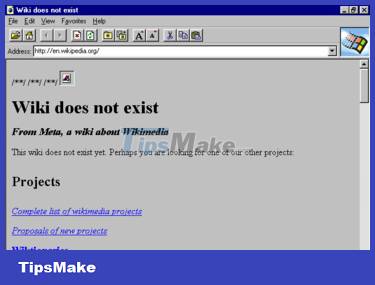
Subsequent IE development was fairly rapid, as Internet Explorer 2 was released on November 22, 1995. Before that, IE2 beta was released in October, just a few months after the session. first version released. Although the first version was only for Windows 95 and later Windows NT, Internet Explorer 2 added support for older Windows 3.1 and Macintosh System 7.0.1.
There are some major added features that we are familiar with in today's web such as JavaScript support, HTTP cookies, SSL etc then upgrade to HTML3 support and you can import bookmarks from Netscape.
Internet Explorer 2.1 was released for Mac in April 1996 and supports embedding AVI, QuickTime, AIFF, MIDI, and WAV files into web pages.
Internet Explorer 3
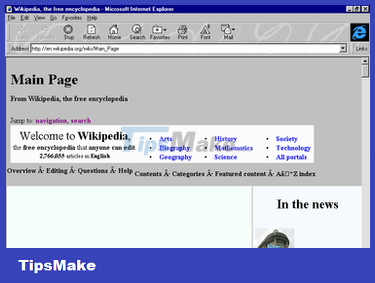
August 13, 1996 was when Internet Explorer 3 was released. While Internet Explorer 2 was the first version to support Mac, it was the first to come with Mac and Mac OS 8.
At this point, IE is still trying to catch up with Netscape, and the rivalry between the two is starting to heat up. One thing added in IE3 is support for CSS or Cascading Stylesheets. There is also support for ActiveX and more modern ways of navigating the site.
This is also when Microsoft introduced JScript, their own version of JavaScript. IE3 also comes with a lot of tools, like Internet Mail and News, Windows Address Book, Microsoft Comic Chat, RealPlayer, NetMeeting and Windows Media Player. Most of those don't exist anymore.
Internet Explorer 4
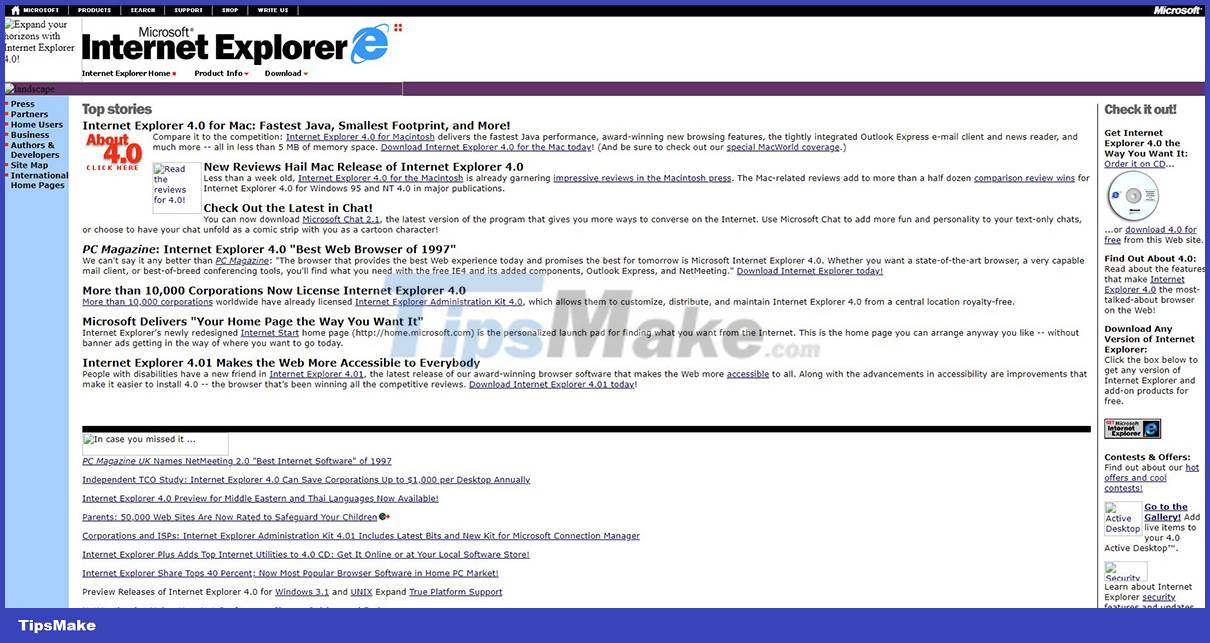
Released in September 1997 for Windows, January 1998 for Mac, and March 1998 for Unix, Internet Explorer 4 was when the so-called browser wars began to heat up. In 1998, no one achieved the gigabit speeds we are used to seeing now. Back then, we accessed the network by dial-up. We have to wait for a low resolution image to be displayed. Of course, it is not possible to watch videos or download all online software quickly. It was a long way from today.
Netscape's web browser used to be the leader in user share among web browsers, but it lost most of its market share to Internet Explorer during the First Web Browser War.
While Netscape does not require OEMs to combine their browsers with Windows, Microsoft strongly encourages OEMs to help develop Internet Explorer and actively tries to prevent them from pre-installing Netscape, even preventing them from displaying the browser's icon. another browser on the screen.
This is where the US Department of Justice comes in. In late 1999, Microsoft was suspected of operating in a monopolistic manner. The following year, the court ordered that Microsoft be split into two: one that made Windows and another that made the software. Microsoft appealed, and in 2001 they were no longer obliged to split the company.
Back in Internet Explorer 4, it added Active Desktop support, allowing HTML content to be added. This time around, Microsoft was thinking about using HTML everywhere, it was packed with Microsoft Chat 2.0, Outlook Express, NetMeeting, FrontPage Express 2.0 and RealPlayer.
This was also when the Trident engine came out, and it was the browser engine used for the rest of IE's life.
Internet Explorer 5

Microsoft Internet Explorer 5 was released on March 18, 1999. IE5 brought new features like AutoComplete, Hotmail integration, offline favorites, the ability to save pages as MHTML, History Explorer Bar and Search Explorer Bar.
On Windows, IE5 requires a minimum of an Intel 486DX processor along with 37 MB of RAM. For Mac, you need a PowerPC processor and 8MB of RAM.
Internet Explorer 6
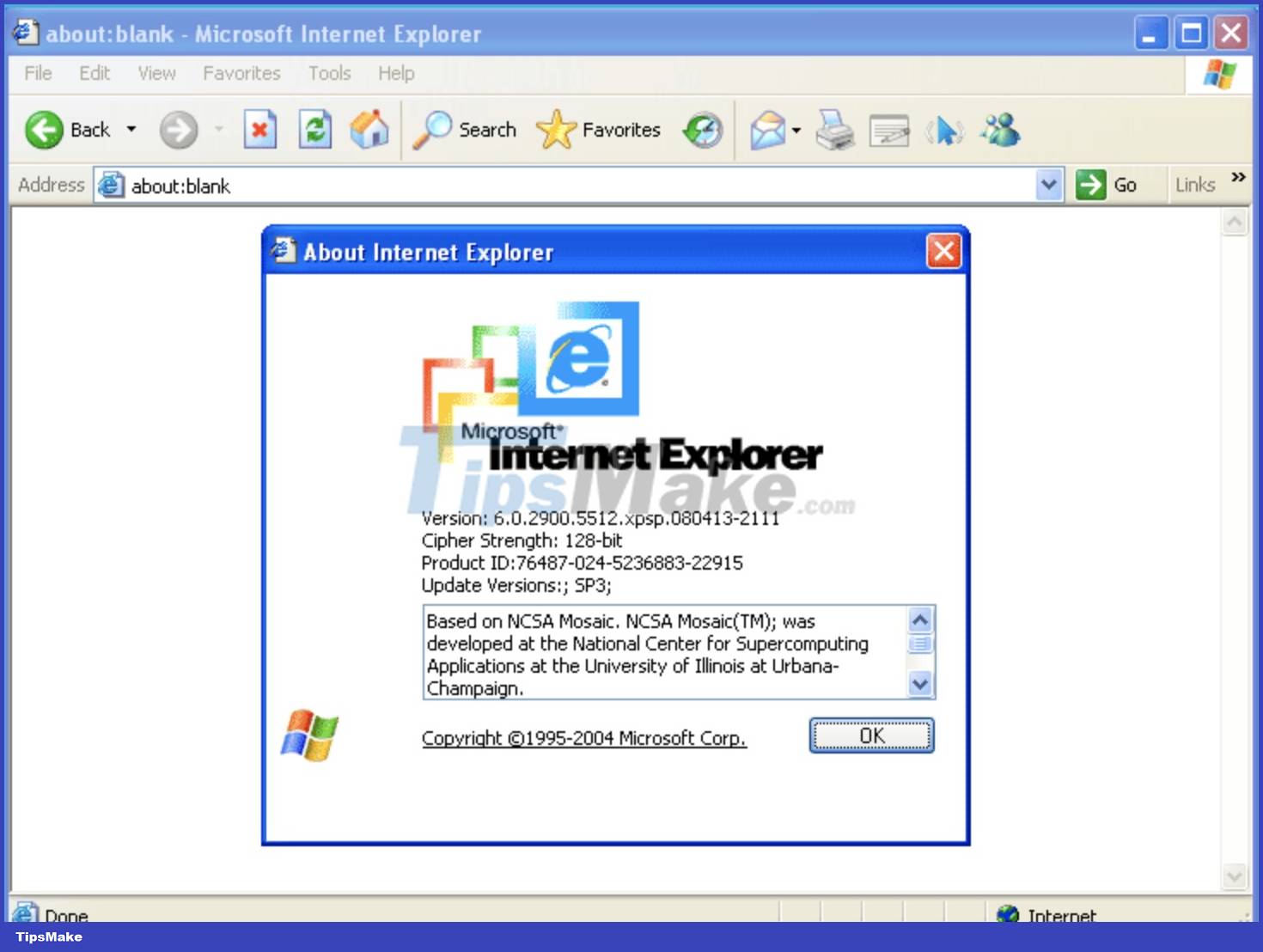
Internet Explorer 6 was released on August 24, 2001, making 2000 the first year without a new Internet Explorer release. It was also the last we saw until 2006 and the first that wasn't available for the Mac. Microsoft's agreement with Apple expired and Apple decided to go ahead with its in-house Safari browser.
IE6 has been redesigned, as it was released shortly before Windows XP. Windows XP had a new design language, called Luna. In addition, there are also improvements to HTML and CSS.
IE6 marks the peak of Internet Explorer. In 5 years IE6 is the current version of this browser, it has reached 90% usage rate, and IE in general reaches 95%. At this point, Netscape was acquired by AOL, but continued to be the Netscape-branded browser until 2008.
IE6 is the final version of the browser to be offered independently of Windows. In the future, Internet Explorer will only come with Windows. These days, we're used to having our browsers update themselves when we don't notice, but back then, you really had to choose to update your browser to a newer version, or you could choose not to update.
Internet Explorer 7
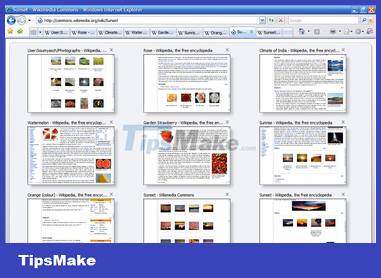
Internet Explorer 7 was released on October 18, 2006, and Internet Explorer 6 remained the most popular version of IE a year later. This release is an important milestone, as it is the first time the tab feature is available. These days, it's hard to imagine what a web browser would look like without tabs. Another important new feature is RSS support. The first operating system that came pre-installed with IE7 was Windows Vista.
The browser has added a Phishing Filter, which basically checks the website you visit and compares it with a list of known phishing sites. It's not perfect, but it's a step forward in enhancing browser security.
Internet Explorer 8
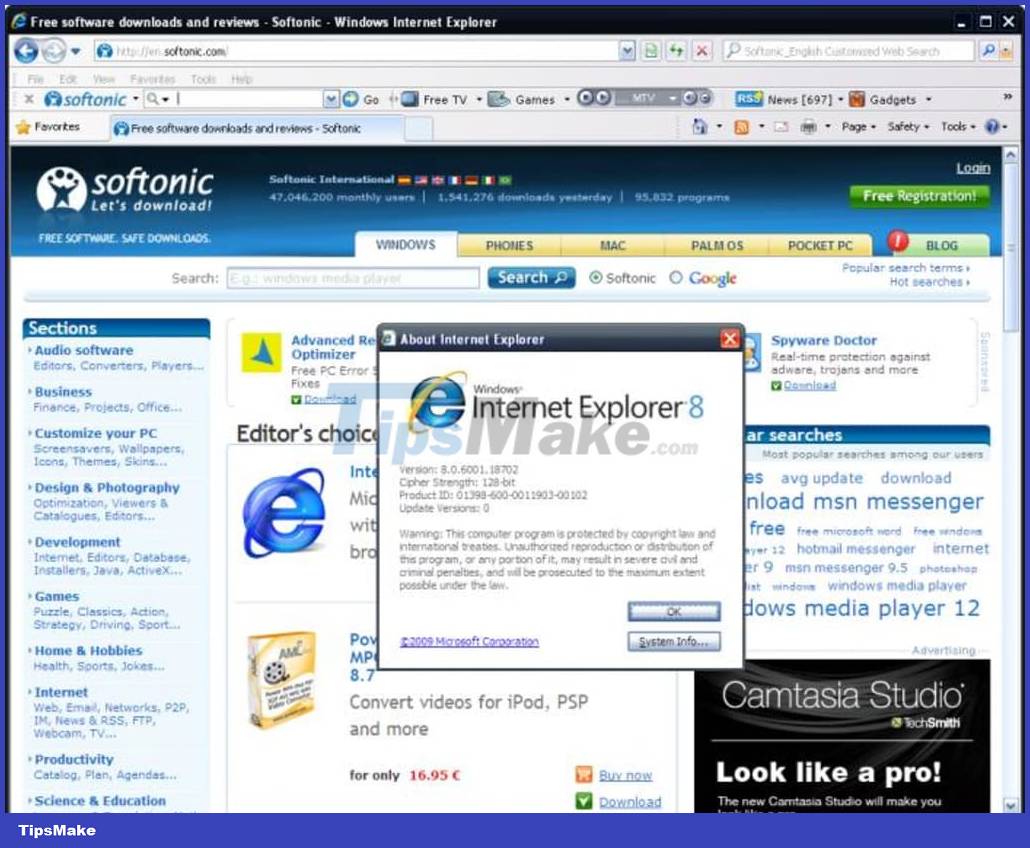
IE8 was released on March 19, 2009 and came pre-installed on Windows 7 when the operating system was released later that year. Like IE7, this browser supports many older versions of Windows, like Windows XP SP2.
This is the first version of Internet Explorer to feature InPrivate browsing. Basically, when you are using InPrivate mode, browser history will not save your browsing progress. This is a common feature these days, and the InPrivate brand still lives on. Another feature introduced is SmartScreen. While Phishing Filter checks websites against a known list, SmartScreen checks for phishing sites and if there are signs, the website is sent to Microsoft.
Developer tools debuted with IE8, allowing developers to debug web pages from within the browser.
Internet Explorer 9
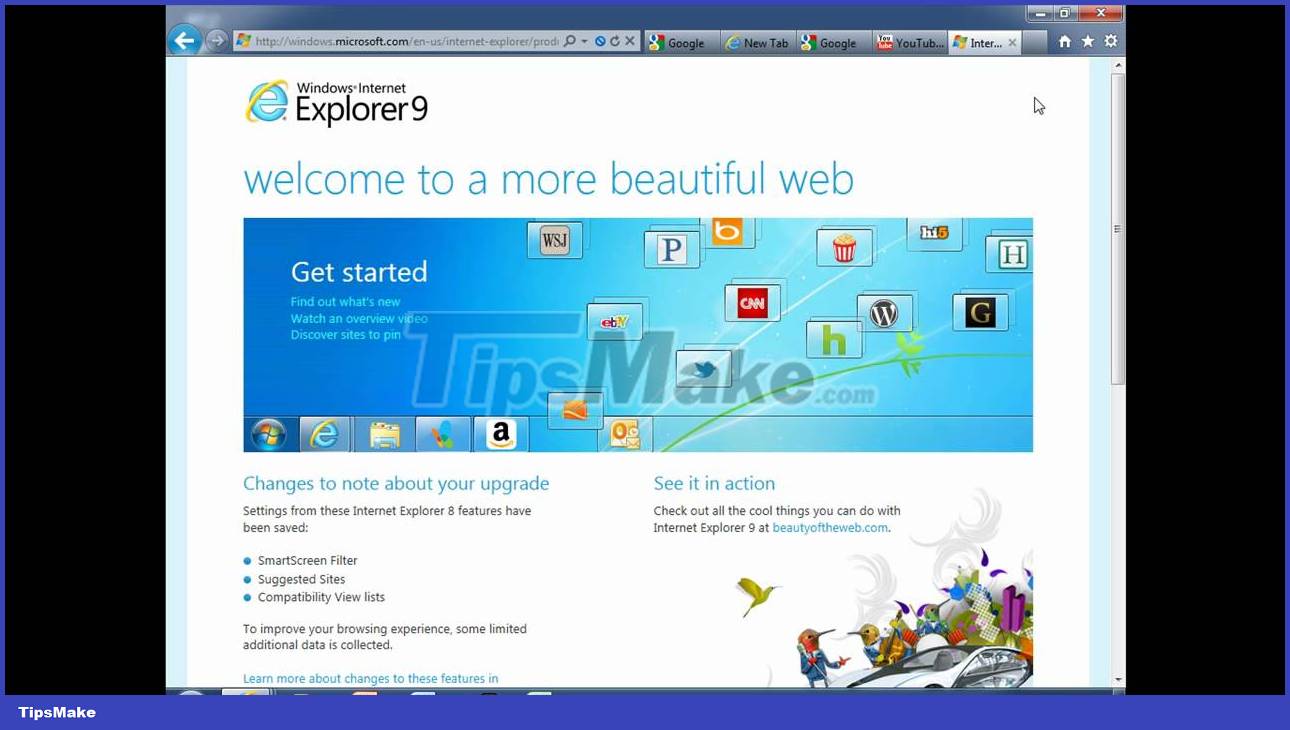
The release time of Internet Explorer 9 does not coincide with the new version of Windows. It was released on March 14, 2011, supporting Windows Vista SP2, Windows 7 and Windows Phone 7.5.
The most notable feature is HTML5 and CSS3 support. These are the foundations for the modern web. Although introduced 14 years ago, HTML5 is still used today.
Internet Explorer 10
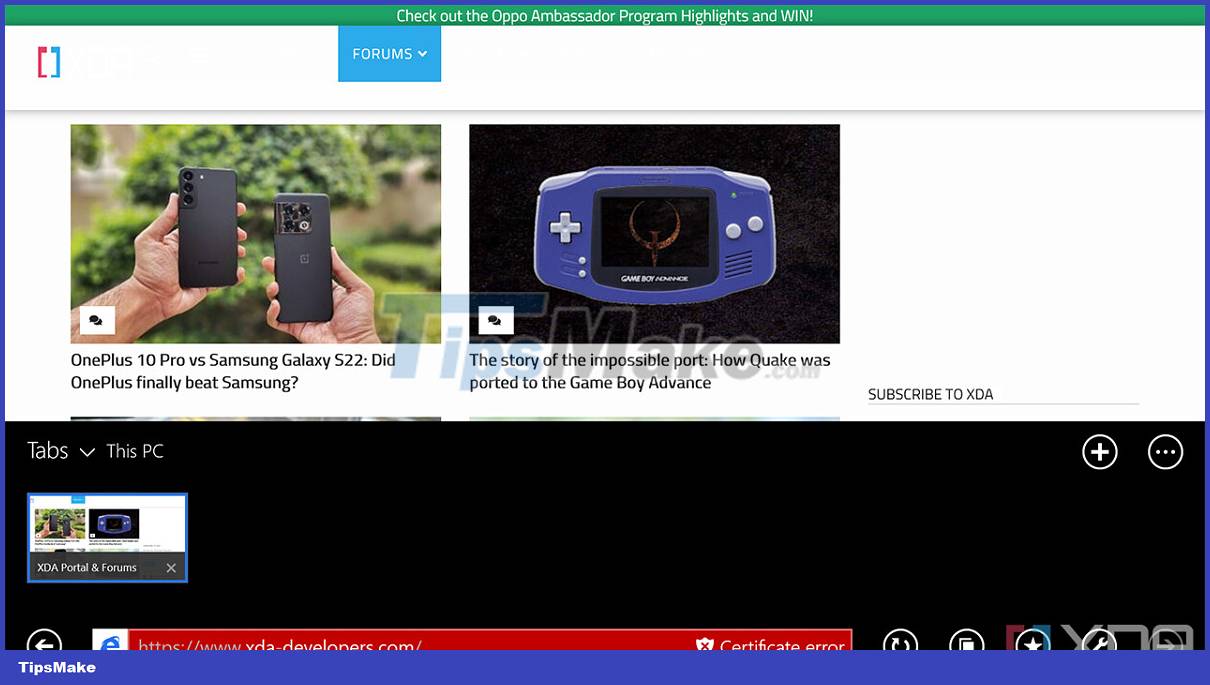
IE10 was released on September 4, 2012, alongside Windows 8, and also coincided with the launch of the Surface PC product line, including Surface RT and Surface Pro. The biggest change with Internet Explorer 10 is that it comes in two separate builds in Windows 8. One is the regular desktop Internet Explorer we all know and… hate, then there's a new Metro app. Metro is the new design style for Windows 8.
With Windows 8, Microsoft killed the Start Menu, replacing it with a Start Screen consisting of tiles. One of those tiles is the desktop icon, which will take you back to the home screen. If you launch a traditional Win32 application, it will launch on the desktop and it will work exactly how you expect it to. If you launch a Metro app, which usually comes from the Windows Store, it launches full screen and you have to manage it with gestures. No more X to close an app with Metro; you must know how to drag apps down from the top of the screen.
Furthermore, you cannot access Metro applications from the desktop environment. These two are completely separate. Microsoft saw Apple's revolution with the iPhone and then the iPad. The company thinks the future of computing is touch, but takes a completely wrong approach.
Metro Internet Explorer is the program that will launch if you open it from the Start Screen. If you open it from the desktop, you get the classic Internet Explorer. The worst part is that if you change your default browser, you will never see Metro Internet Explorer again. Even opening it from the Start Screen opens classic IE.
IE10 is also the first version with Adobe Flash integration, instead of requiring users to install as an add-on. It is also the final fully branded version of 'Windows Internet Explorer' that Microsoft has used since IE7. Starting with IE11, it was just called Internet Explorer.
Internet Explorer 11
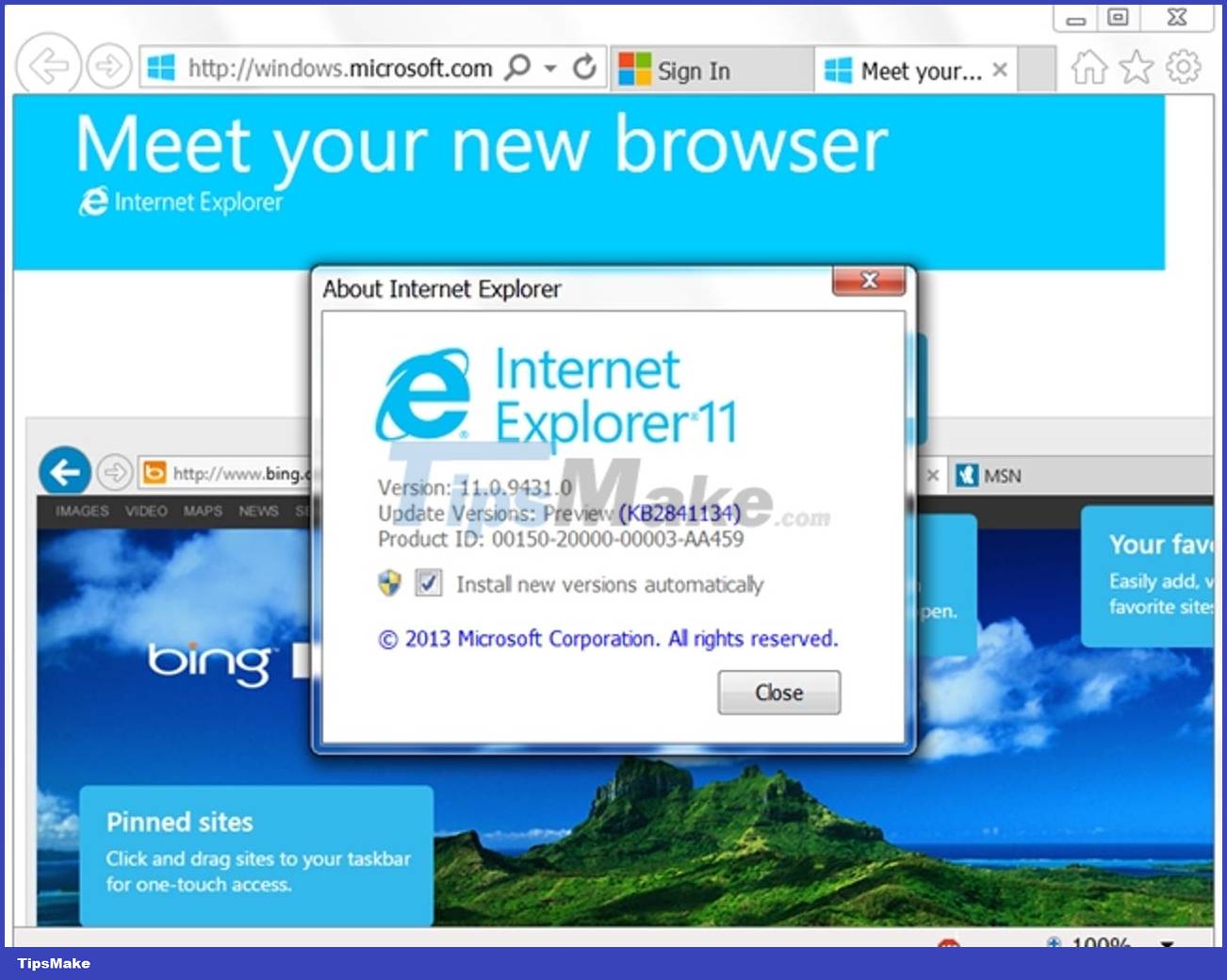
Internet Explorer 11 was released on October 17, 2013 and is included with Windows 8.1. Up to this point, IE still has the weird behavior of creating two different apps that can launch depending on where you launch them and what your default browser is. However, Windows has changed a lot. The effort in Windows 8.1 was to correct Windows 8's mistakes, so the familiar X was added to close Metro apps, the Start button was added back to bring you back to the Start Screen and accessible apps. use Metro from a desktop environment.
Most of the new features in IE11 are improvements, the big one being better support for high DPI displays. High-resolution displays are still in its infancy right now, and it's taking Windows a while to catch up.
Microsoft Edge – Spartan
Project Spartan: Beyond Browsing
At the Windows 10 announcement event, Microsoft also announced Project Spartan, its next-generation web browser. Project Spartan is planned with some innovative features, such as the ability to mark up web pages with a stylus and save them. It will also have Cortana integration and come with a new and promised Reading View mode that is promised to be faster.
Microsoft Edge launched on July 29, 2015 as part of Windows 10. Windows 10 itself was a major change in the way Windows was developed and distributed.
The company had a lot of difficulties in the process of killing Windows XP, they realized that they were competing with themselves. Windows 10 was announced as a free upgrade for all devices running Windows 7, Windows 8.1, and Windows Phone 8.1. With Windows 10, updates will be free for the life of the device.
The whole idea behind this strategy is to stop competing with yourself. Microsoft wants everyone to use Windows 10. As a result, Edge is the first new browser from Microsoft that is not backward compatible with older versions of Windows. This is a browser specifically for Windows 10.
When Project Spartan became Microsoft Edge, the logo was still the blue E, but rebranding was necessary as the IE name had become tarnished over the years. The idea behind the new icon is that while it looks different, it's familiar enough for users who can only click on the blue E to access the internet.
Microsoft Edge – Anaheim
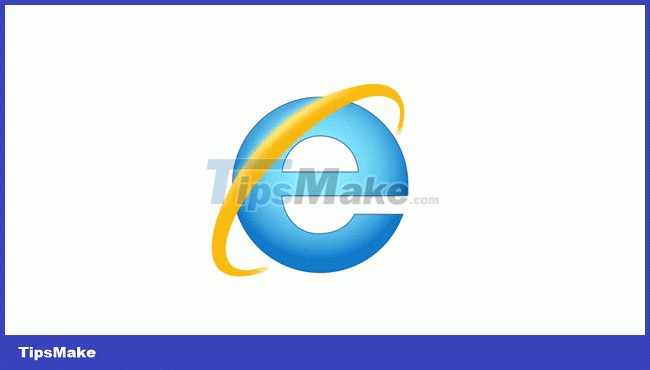
Edge did not attract users in the way that Microsoft expected. This time around, nearly everything out there is built for Chrome, Google's browser. Instead of trying to beat the competition, Microsoft decided to join them.
In December 2018, Microsoft announced its intention to rebuild Edge from Google's Chromium open source code. The browser is open to anyone to try it out on January 15, 2020, but then it still lacks a lot of key features, such as Arm64 support, history syncing, and extension syncing .
Codenamed Anaheim, Edge Chromium also marks Microsoft's return to creating a cross-platform browser.
Today, Microsoft Edge is Microsoft's most important browser and one of its key features is IE Mode. Although Microsoft has been warning the end of IE for years, some businesses still haven't been able to change the browser. Microsoft handles this one by putting them in IE Mode, which is essentially a tab of Internet Explorer in Edge.
Currently, Internet Explorer no longer receives any kind of security updates. This browser is dead.
You should read it
- Instructions to remove Internet Explorer 10 in Windows 8
- How to enable Internet Explorer mode on Microsoft Edge
- How to Completely Uninstall Internet Explorer
- Instructions on how to remove Internet Explorer on Windows 10
- How to Update Microsoft Internet Explorer
- Instructions on how to install Internet Explorer
 The 'Windows 11 style' Microsoft Edge interface is available, activate and experience immediately
The 'Windows 11 style' Microsoft Edge interface is available, activate and experience immediately Microsoft urges users to stop using Internet Explorer
Microsoft urges users to stop using Internet Explorer Microsoft is about to integrate VPN into Edge browser
Microsoft is about to integrate VPN into Edge browser 10+ Extensions on Chrome make Designer more comfortable
10+ Extensions on Chrome make Designer more comfortable Chrome, Edge and Firefox cannot be opened after updating Windows 10, 11
Chrome, Edge and Firefox cannot be opened after updating Windows 10, 11 Microsoft once again shows off the superiority of Sleeping Tabs on Edge 100
Microsoft once again shows off the superiority of Sleeping Tabs on Edge 100